At Inclusive Technology, our communication boards are designed by AAC experts using the PCS symbol language and follow the Fitzgerald Key colour system. They are available in a range of durable formats, including:

Communication boards are essential tools for individuals who use Augmentative and Alternative Communication (AAC). But have you ever noticed the bright, structured colours on many of them?
Those colours are far more than just decoration. They follow the Fitzgerald Key, a colour-coded system designed to support users in finding the right words more quickly and constructing sentences with confidence.
In this post, we’ll explain what the Fitzgerald Key is, what each colour represents, and how this thoughtful design helps improve communication for AAC users of all ages and abilities.
The Fitzgerald Key is a widely used colour-coding system created by Edith Fitzgerald, an educator of the deaf in the early 20th century. It was originally designed to help learners understand sentence structure and word function through visual organisation.
In AAC and communication boards, the Fitzgerald Key uses specific colours to represent different parts of speech, making it easier for users to:
By applying consistent colours to specific word types, communication boards become easier to learn, more intuitive to use, and more supportive of language development.
Yellow is used for personal pronouns and people. This includes words like I, you, he, mum, dad, nurse, and others.
These are often the first words used in communication. Colour-coding them in yellow helps users quickly refer to themselves and others, forming the foundation of personal expression.
Orange represents nouns - the people, places, and tangible things in our world. Examples include bed, TV, car park, school, or hospital.
By grouping everyday items and locations in one colour, users can more easily find what they're talking about and stay focused when building a sentence.
Blue is for descriptive language, including adjectives and emotions, such as happy, sad, hot, tired, itchy, and cold.
These words help users express how they feel and describe the world around them. Using blue provides consistency and encourages emotional literacy and expressive language.
Grey or white is used for core functional words that help build complete sentences. These include yes, no, not, with, to, and, and more.
While they might seem small, these words are essential for making sentences work. Colour-coding them ensures they don’t get lost among more visually prominent words.
The Fitzgerald Key is more than a visual aid; it is a language development tool. For users of AAC, it provides structure, boosts confidence, and improves speed and independence in communication.
By helping users visually differentiate between types of words, communication boards become far more accessible and intuitive, especially for learners with additional needs, processing difficulties, or limited literacy.
At Inclusive Technology, our communication boards are designed by AAC experts using the PCS symbol language and follow the Fitzgerald Key colour system. They are available in a range of durable formats, including:
A freestanding, double-sided board ideal for schools, libraries, playgrounds and other public spaces. Designed for quick, accessible communication wherever it’s needed most.
Built for durability, this wall-mounted board is perfect for indoor and outdoor use. The dark background provides high contrast for easier symbol recognition.
With the same accessible layout but a brighter design, this board is ideal for environments where a light background may better suit visual or sensory needs.
They’ve also been designed to suit different spaces. We have boards to support communication in hospitals, classrooms, libraries, playgrounds and town centres.
Some of the products in your order may be eligible for VAT Relief. See A Guide to VAT Relief for more details. If you do qualify for VAT Relief, please tick the relevant box below.
Please note: VAT Relief cannot be claimed by schools, other educational institutes, LEAs or companies - it is for private individuals and charities only.
Please note there are penalties for making false declarations
You (or the person for whom you are purchasing the products on behalf of) do not have to be registered disabled, but the nature of the illness or disablement must be specified below.
If you are in any doubt as to whether you are eligible to receive goods or services zero-rated for VAT you should consult Notice 701/7 VAT reliefs for disabled people or contact the National Advice Service on 0845 010 9000 before digitally signing the declaration.
By completing this form you authorise Inclusive Technology Ltd to hold your information on file. This data will be used for VAT accounting purposes only.
Please note there are penalties for making false declarations
You (or the person for whom you are purchasing the products on behalf of) do not have to be registered disabled, but the nature of the illness or disablement must be specified below.
If you are in any doubt as to whether you are eligible to receive goods or services zero-rated for VAT you should consult Notice 701/7 VAT reliefs for disabled people or contact the National Advice Service on 0845 010 9000 before digitally signing the declaration.